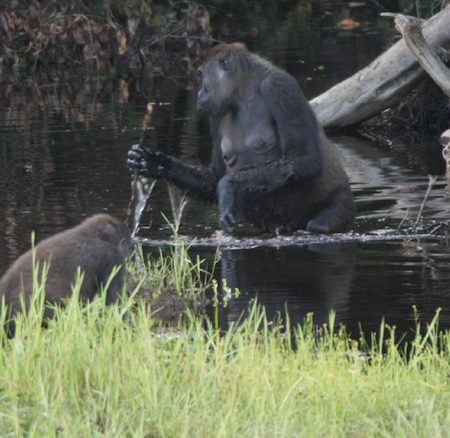‘Tool use in wild western gorillas (Gorilla gorilla).’
The use of a tool to aid in the search for food can be seen in many different animals, from crows using twigs to dig for grubs, to elephants using tree branches to swat flies and scratch themselves (Holdrege, 2001). Western gorillas (Gorilla gorilla) are no exception to this phenomenon. Recently there have been some interesting observations of gorillas using tools as a way to obtain previously unaccessible foods. Wild gorillas have been seen using rocks in a hammer and anvil fashion in order to smash apart nuts and extract the inner contents (McNamara 2005). Eli, a female gorilla living in Nouabal-Ndoki National Park in the Republic of the Congo was caught on film using the trunck of a tree as a base of support to hang off as she leaned over a body of water to search for herbs to eat (Bruerer et al, 2005).
Gorillas have also been observed using tools for more than just acquiring food. Gorillas are not notorious for their ability to swim, therefore falling into deep water would not be conducive to a happy and long life for a gorilla. Leah, a different female gorilla living in Nouabal-Ndoki National Park has been observed using a stick as a means to check the depth of the water as she passes through swampy areas (Breurer et al). Such behaviors should not be surprising from an animal that shares 98.4% of it’s genetic make up with humans. Darwin was probably right, we did evolve from monkeys.
References:
“A Tough Nut To Crack For Evolution,” by Melissa McNamara. CBS News. 18 October 2005. URL: http://www.cbsnews.com/stories/2005/10/18/tech/main951800.shtml (accessed on 3 April 2010).
Breuer T, Ndoundou-Hockemba M, Fishlock V, 2005. First Observation of Tool Use in Wild Gorillas. PLoS Biology, 3(11): 2041-2043.
Holdrege, C, 2001. Elephantine Intelligence. Spring 5:10-13.

